The Hyundai Ioniq 6 you’re looking at here is the SE, the lowest rung on the trim level with the bigger 77.4 kilowatt-hour battery pack (there is an SE Standard Range). This is the first time Autoblog is testing this version, although it’s unusual for us or any automotive publication to test base models like this. First, carmakers want the nicest-possible versions to be reviewed in order to increase the chances of a positive outcome, which means upper trims. Second, and less cynically, they want as many of the car’s features to be reviewed, which again, means upper trims.
Exceptions happen when lower trim levels are tied to some other fundamental element. For instance, the highest 2023 Honda Accord trim level available with a gas-only engine is the second-from-the-bottom EX. The Ioniq 6 is another example: The SE is the most-efficient version with the long-range battery, good for 361 miles versus 305. That’s an enormous difference, and it comes down to efficiency, seemingly related to the SE’s smaller 18-inch wheels (versus 20). The single-motor, rear-wheel-drive setup is another key factor; a dual-motor SE long-range is only good for 316 miles.
OK, but we’re here to talk about the interior, and if you want the most-efficient, longest-range Ioniq 6, that interior is going to look like this. The seats will be cloth, and every interior surface will be black apart from the silver trim bits.
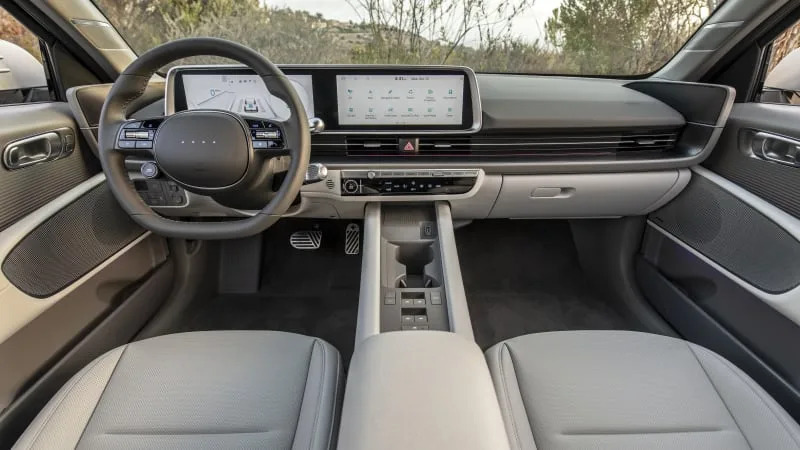
Above, you can see the difference between the SE and a Limited. Note the two-tone gray surfaces in place of all that black, although there is an all-black version available. Certain exterior colors, including our tester’s beautiful Digital Green, can be paired with a combo of gray and Dark Green, the latter of which appears on the dash top and steering wheel. It’s pretty cool.
OK, but you can’t have that in the SE.
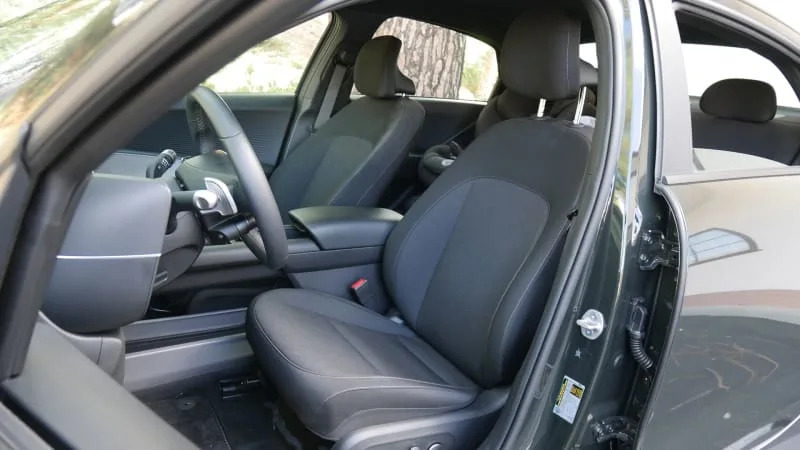
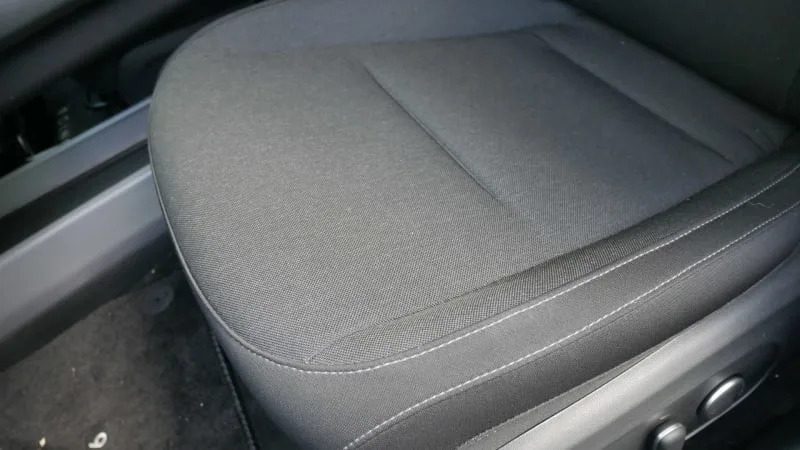
Here’s the most obvious difference: the upholstery. Instead of the “bio-based” H-Tex simulated leather upholstery found on the upper trim levels, the SE gets cloth. It’s pretty unremarkable stuff. Considering the fundamental difference between the SE and other trim levels, I think this thing should have H-Tex, too, and cut back in other areas. Or, I don’t know, offer better-equipped versions with the 18-inch wheels? I’m just spitballing here.
The driver seat is eight-way power adjustable and heated. The Limited adds ventilation and memory settings, plus a power passenger seat.
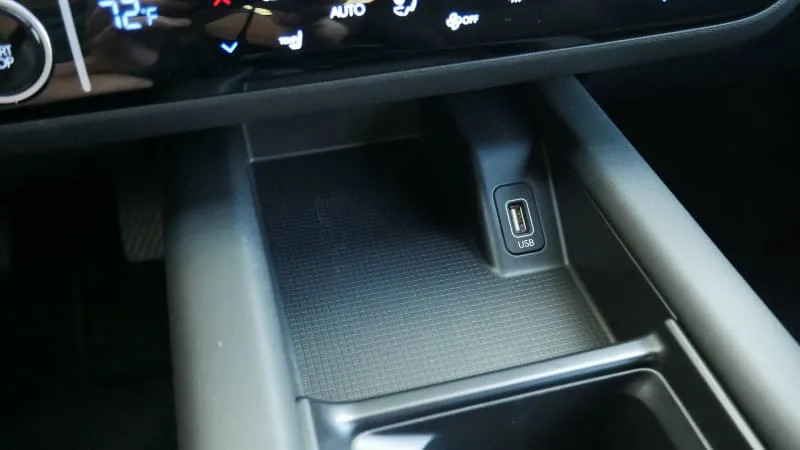
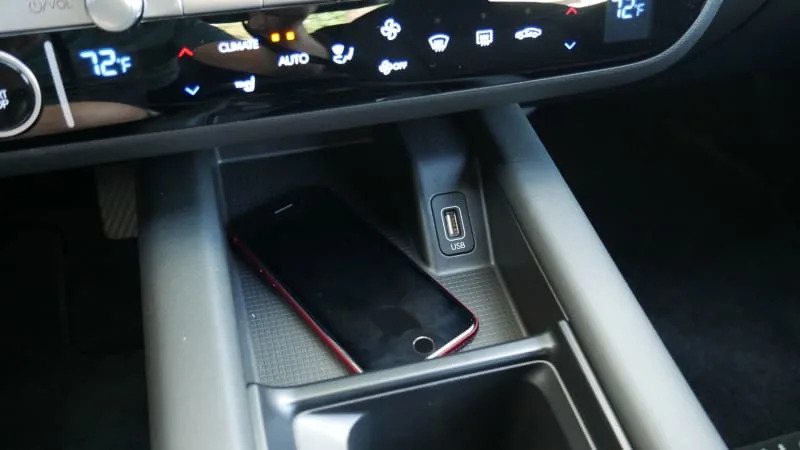
Here is another key difference: The SE doesn’t not have a wireless charger. Instead, it has this bin, which is fine in concept, but it’s a hard plastic surface. Your phone or whatever just slides around on it and it’s annoying.
On the upside, the USB data port needed for Apple CarPlay and Android Auto (wireless not available) is right here. It’s annoyingly down by the floor in the Ioniq 5 and Kia EV6 (the Ioniq 6’s mechanically related cousins that share the same E-GMP platform).
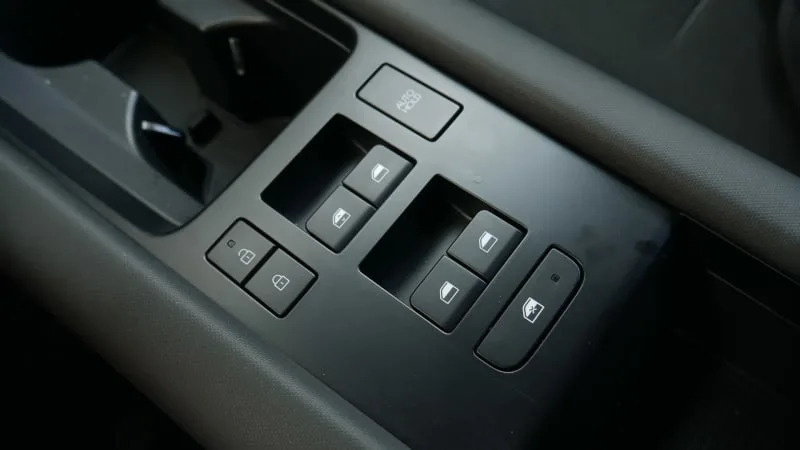
The Ioniq 6 also differs from its E-GMP siblings, as well as most cars on the road, by locating its window switches and door lock buttons on the center console. As the owner of an old BMW, this is pretty easy to wrap my head around, but for everyone else besides Jeep Wrangler owners, this is going to be strange. Hyundai says it’s to make the doors look uncluttered. I say it’s also so they don’t have to put controls on both the driver and passenger doors, or switch things around for right-hand-drive markets. In any event, it’s better than putting them in a touchscreen.
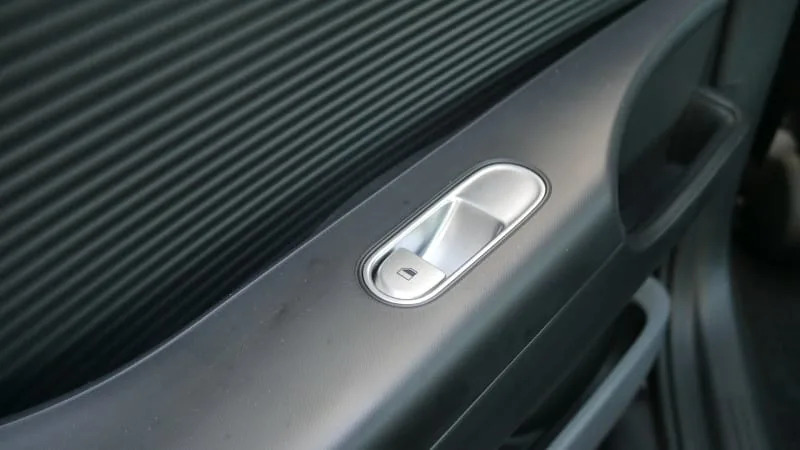
The back doors still have window switches.
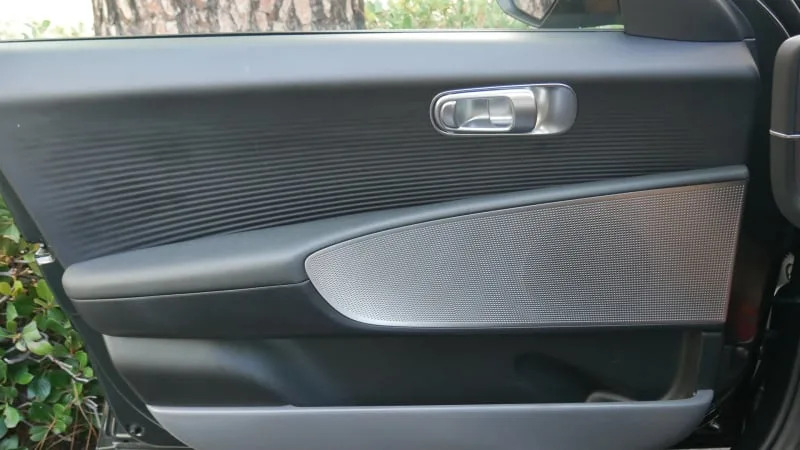
Here is that nice, uncluttered door panel. It is definitely a nice-looking door panel, I’ll give ’em that.
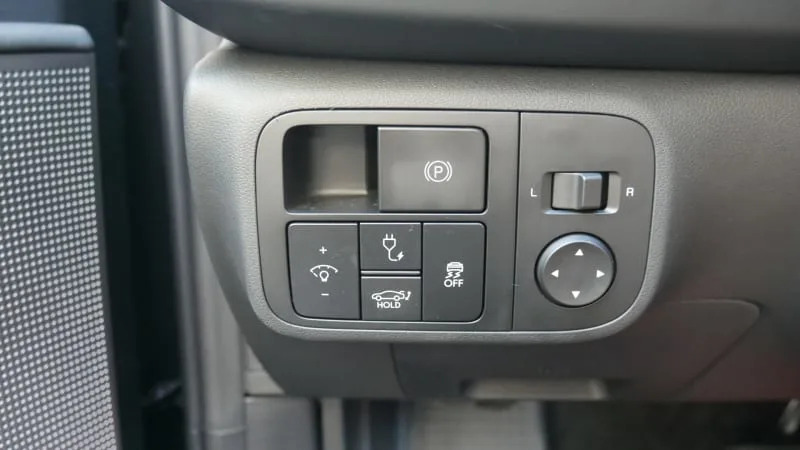
The mirror controls aren’t on the doors, either, nor is the parking brake on the center console as in other Hyundai/Kias. They join this other stuff to the left of the steering wheel.
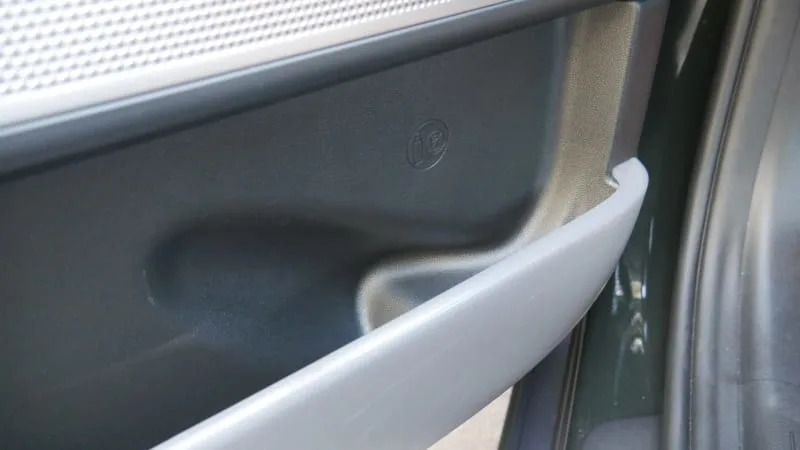
The door’s bottle holder is not particularly useful, though, which is a common issue in Hyundais and Kias.

Center console cupholders are pretty standard. Average depth and diameter, decent grippage.
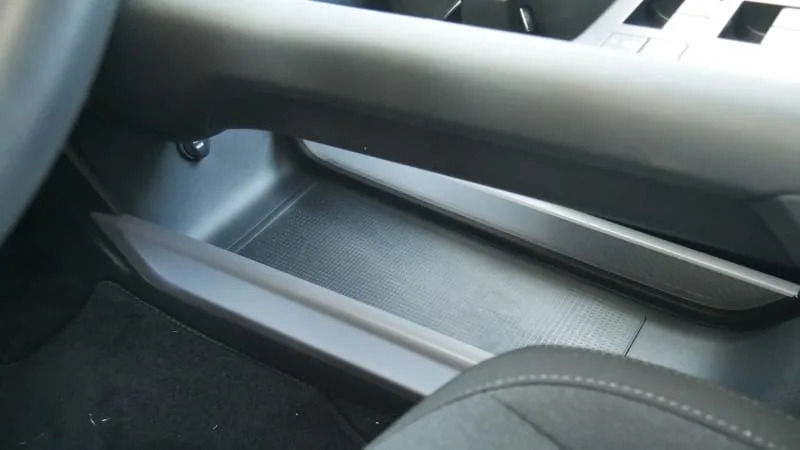
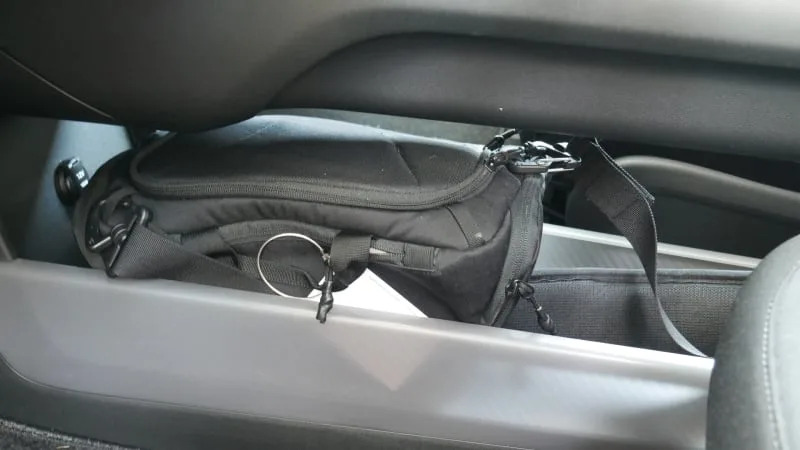
Like most EVs, there is abundant floor-level storage, in this case, underneath the floating center console. It is big enough to fit my camera bag, which I’d say is comparable to an average purse.
Thankfully, this bin does have a rubber surface to prevent things from sliding around.
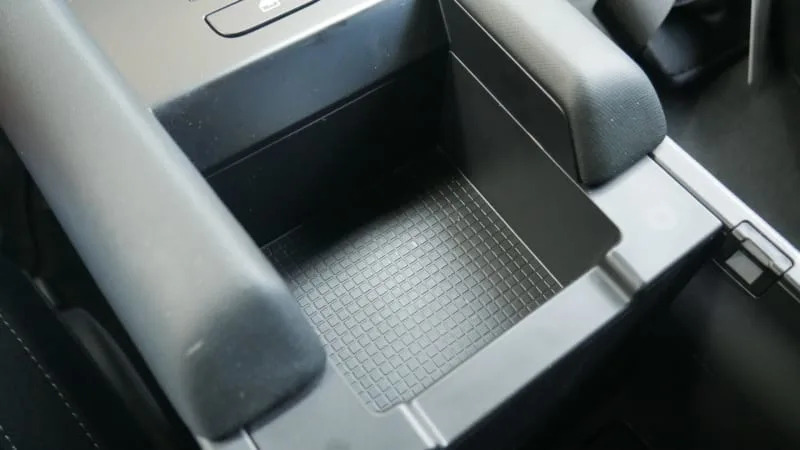
This smaller bin, however, is still hard plastic. Located aft of the window switches and partially covered by the armrest bin cover, it would be a decent place to put a phone if it didn’t allow it to slide all over the place.
Beyond this sliding issue, this grade of plastic doesn’t seem appropriate for a car of this size and price.
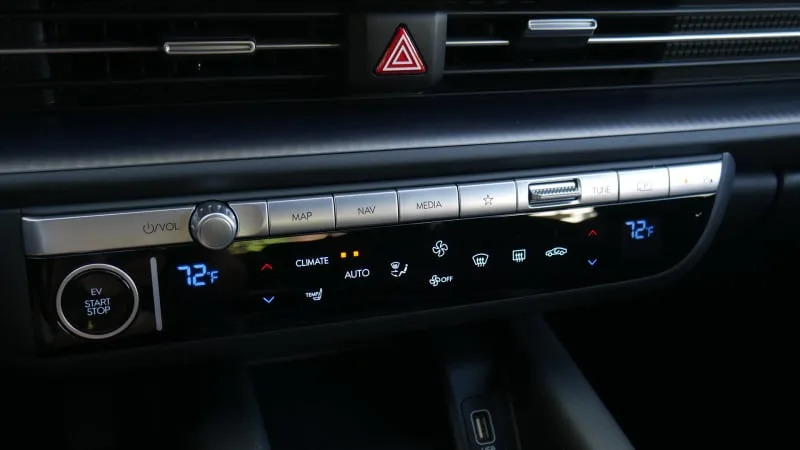
Let’s turn to tech. This would be the exact same unit found in the Ioniq 5, which houses touch-sensitive climate controls and physical controls for infotainment shortcuts (including buttons, a volume knob and weird tuning toggle).
I can’t say I love the all-touch climate controls, especially for temp increase/decrease that are better served by knobs. You also have to dig into the climate menu to engage sync. That said, they are separate from the touchscreen, so these days, that’s a win.
Now, while I am always appreciative of physical infotainment shortcuts, the Ioniqs lose a key button found in other Hyundais and Kias: Radio. Typically, there is both Radio and Media, the latter of which includes Bluetooth Audio and USB-connected devices. Here, there is only Media, which means that Radio gets lumped into it. As such, in order to get to the radio screen, you must now either press media twice to bring up a media menu, then press FM, AM or SiriusXM on the touchscreen, or click Home on the touchscreen and click-click-click to the desired radio menu.
Of course, that star button is customizable, so I could make that a radio button. But that would mean I could not make it the Apple CarPlay (aka Phone Projection) button, which is a great feature.
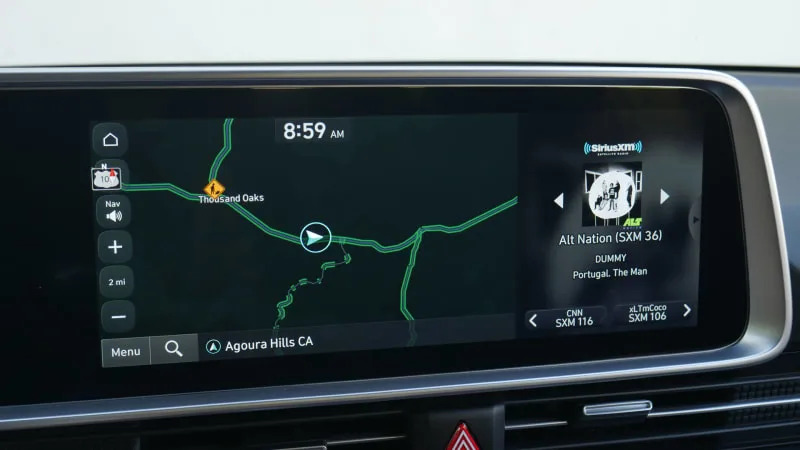

Here is the touchscreen. This is basically the exact same layout as in my own car, the Kia Niro EV, as well as various Hyundais. It is different than the Kia EV6‘s audio look.
You can switch these to a white background during the day, but no thank you.
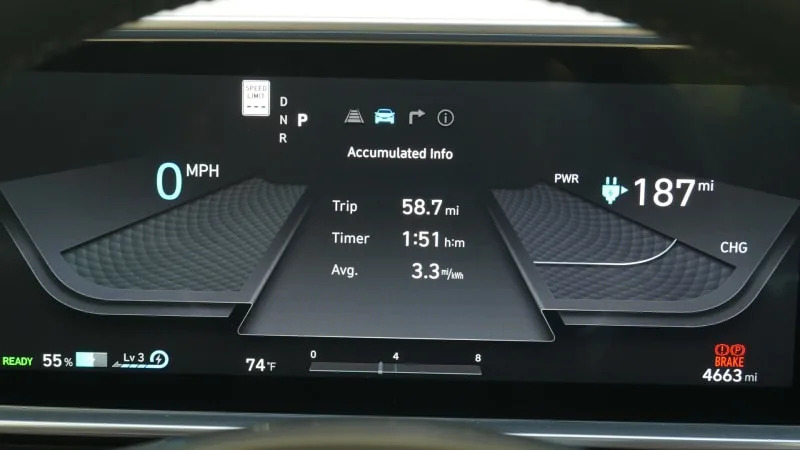
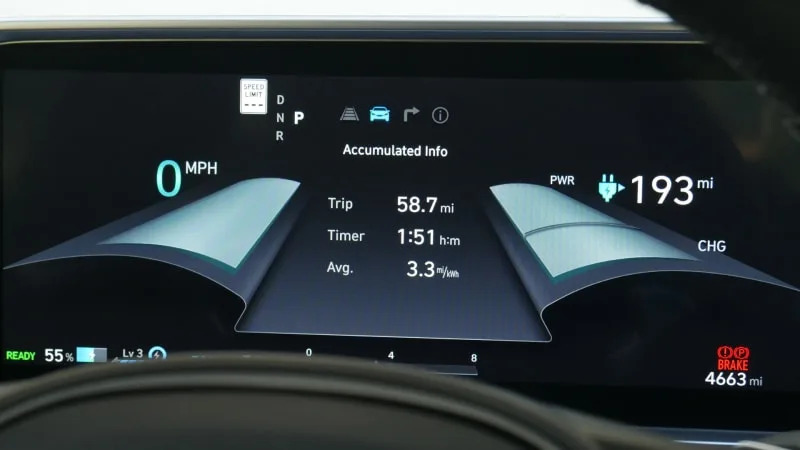
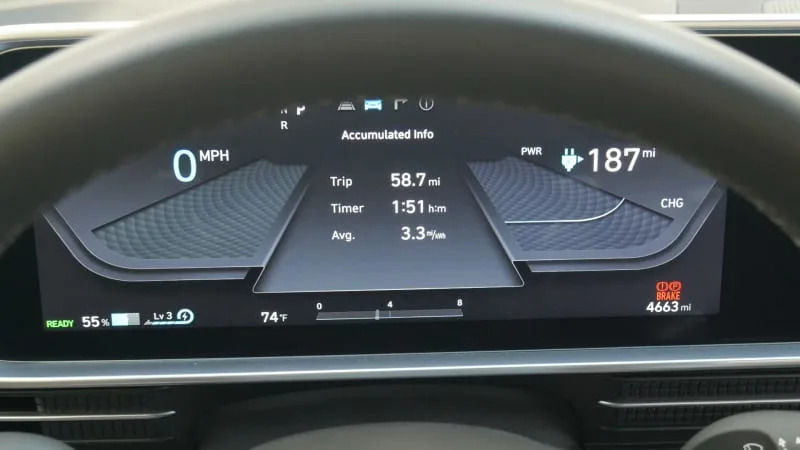
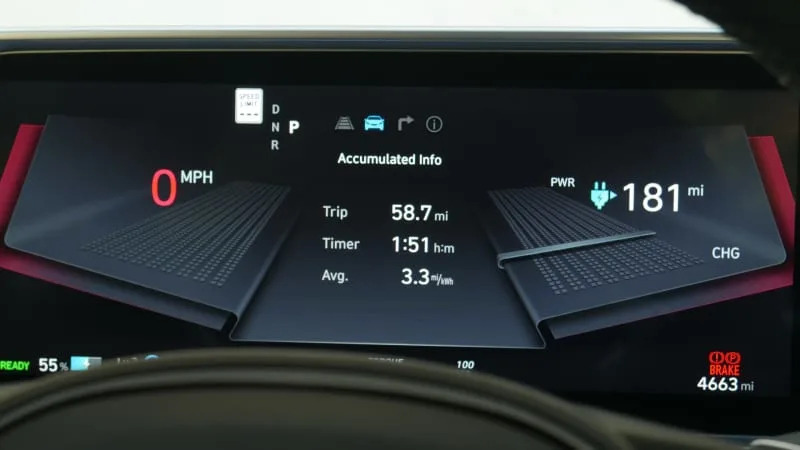
Here are the various instrument panel looks, which admittedly, aren’t very different. They are tied to the drive mode. Clockwise from upper left (or if on mobile, pics 1,2,4 and 3): normal, eco and sport, plus my view of the gauges. Unlike in the Ioniq 5 and EV6, which have very similar designs, I can actually see the speed and range figures.
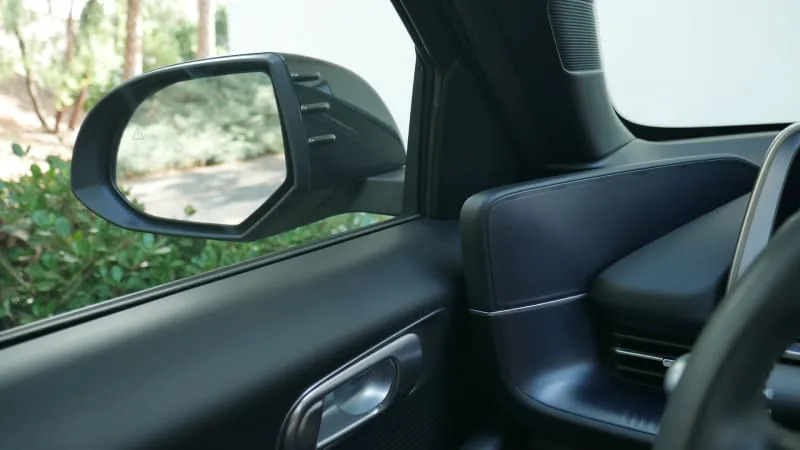
What’s that weird squared-off trim panel that juts out? That would be where the video side “mirror” display would be in other markets. We get old-fashioned mirrors. I’m OK with that.
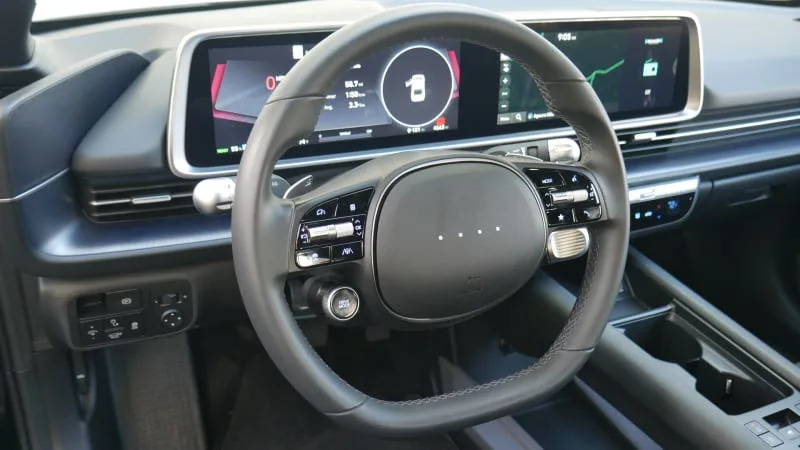
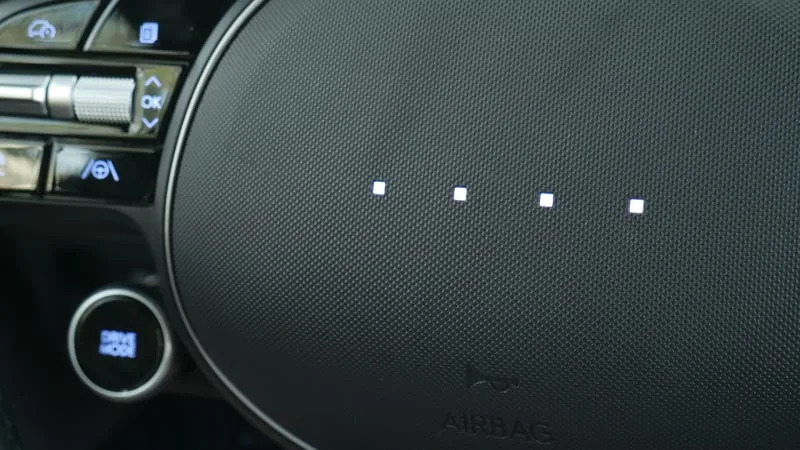
The seats are cloth, but the steering wheel is wrapped in leather. I like this wheel quite a bit thanks to the just-right grips at 3 and 9.
Those little dots are actually lights. They flash green when you select eco mode and red when you select sport.
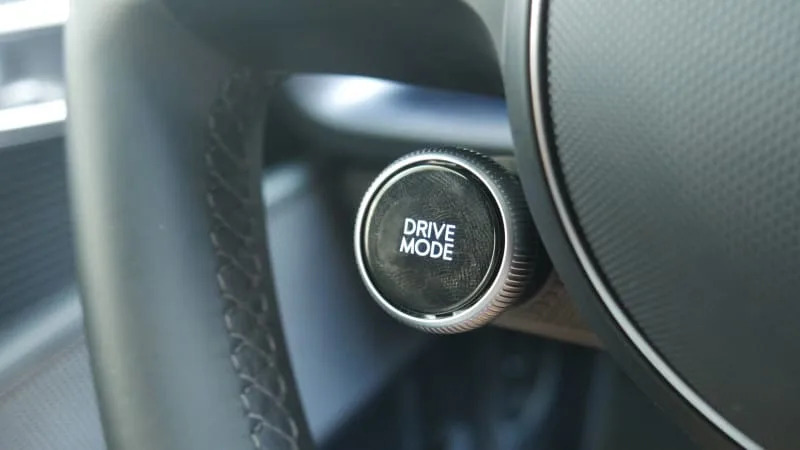
This Drive Mode control on the wheel looks like a knob, as in Porsches with the Sport Chrono Package, but it’s just a button.
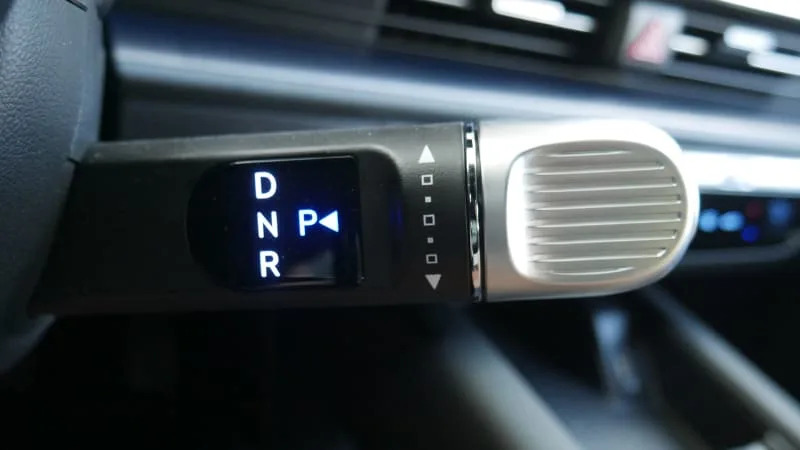
Here is the shifter, which is the same as the Ioniq 5’s. It makes sense in theory: Twist forward for Drive, twist backward for reverse. Except, if you’re used to “monostable” shifters on the center console where you push forward for reverse and pull back for drive, this control setup will seem backwards.
I don’t think this is a problem, it does make sense. It’s just that you may need to reprogram your brain depending on your last car.
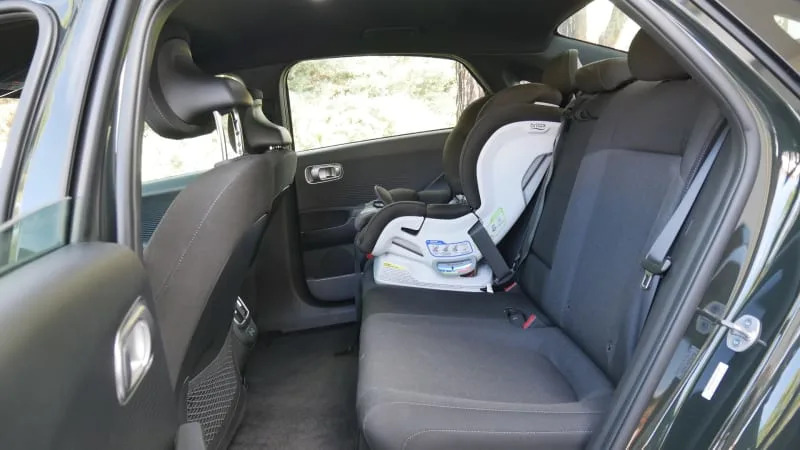
Here is the back seat. There is tons of legroom here: The driver seat is pushed way back for a 6-foot-3 driver. Obviously plenty of room for a big child seat, too.
However, the seat is quite low (my knees were considerably far above the seat bottom) to make up for the low roof, which was still grazing my head.
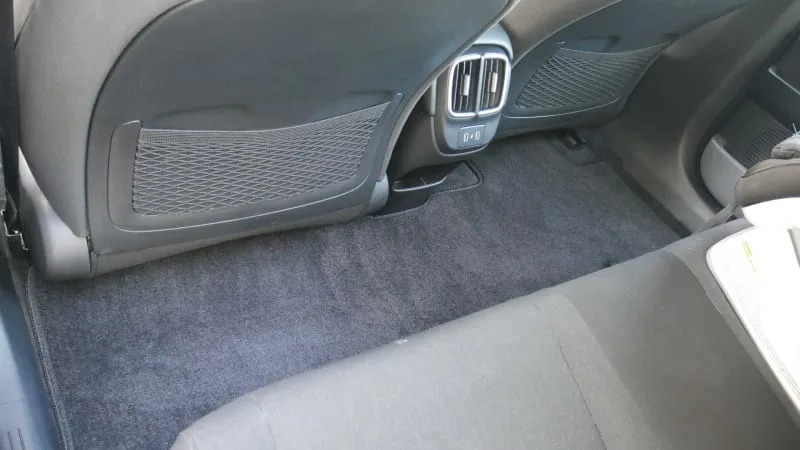
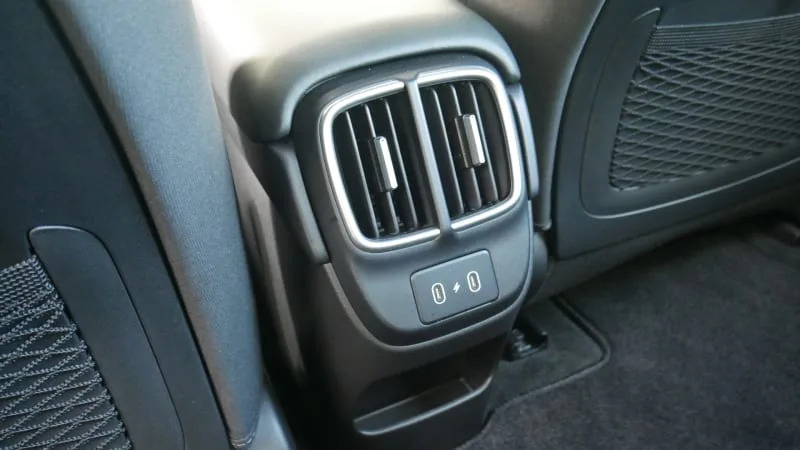
As in other EVs, there is a flat rear floor.
You also get big air vents and USB-C ports in the SE.
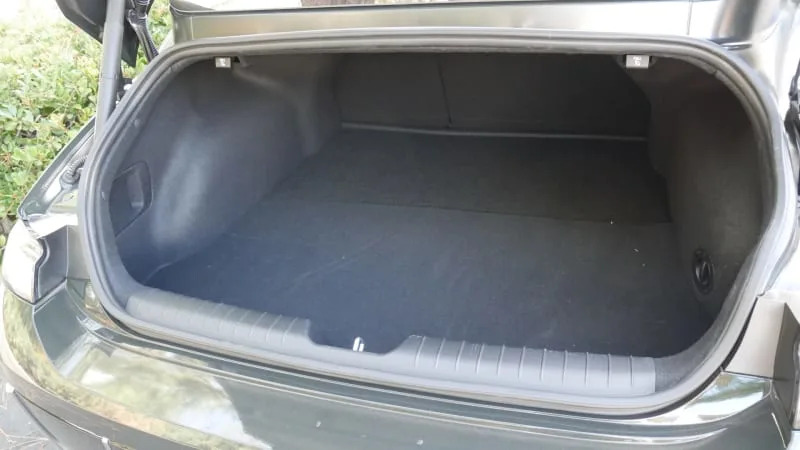
Finally, here is the trunk. It measures only 11.2 cubic-feet, which is quite small for a sedan. The sloped opening and trunk lid would be the big problem. I’ll do a deep dive in here in a future luggage test, but as a sneak preview, not all my usual bags fit inside.
Obviously, the Ioniq 5 is better in this particular regard, although it also has its cargo issues.
So there you have it, the Ioniq 6 SE’s interior. I think I’d spring for the SEL or Limited and live with 305 miles of range, which is still an awful lot. I don’t like this particular cloth upholstery, the hard-plastic bins are annoying, and I really like the available green dash.
